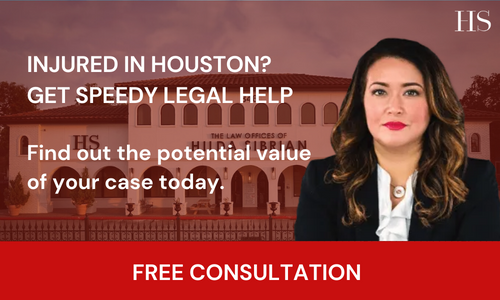World Kindness Day is a national reminder that small, everyday actions can make a real difference. In Houston, one place where kindness is needed most is on the road. Long commutes, heavy freeway congestion, and constant construction pushes even the calmest drivers to the edge – in fact, the Texas Department of Insurance reports that approximately 80% of polled drivers express serious aggression, anger, or road rage at least once a year. However, when frustration turns into aggressive driving, the risk of serious accidents rises quickly.
Long commutes also play a major role. After an hour on the road, it becomes easy to react emotionally instead of rationally. Fatigue, hot summer heat, and gridlock all compound this issue.
What Road Rage Looks Like in Houston
Aggressive driving takes many forms on Houston’s roads – tailgating on the North Freeway, brake-checking near the Loop, weaving through lanes on I-10, and blocking merges on Beltway 8 are all common examples in everyday life. Honking, yelling, and confrontations during red lights can escalate situations even further. These behaviors are not only stressful but also a leading cause of preventable, intentional crashes citywide.
But it isn’t hard to see why people are so upset – Houston’s layout contributes directly to the problem. Multi-lane freeways, constant growth, and packed rush hours create the exact conditions required to make drivers as tense as possible. And with 2 projects starting soon that will result in roadway blockages for several years, the problem is unlikely to get better. TxDOT and local agencies have also tracked increases in speeding, erratic lane changes, and other aggressive behaviors across the region.
Why Road Rage Is Especially Dangerous Here
Houston’s freeways carry some of the highest traffic volumes in Texas, and according to our research, the number of deaths on interstate highways has increased every single year since 2020. In addition, a recent analysis found that Texas had 2.5 road-rage incidents and 7.2 aggressive driving fatal accidents per 100,000 residents (2014-2023) – aggressive/careless driving was cited in 37.4 % of all accidents and 38.8 % of all fatalities.
Speed limits on major corridors like I-45 and US-59 mean that one reckless maneuver can cause a chain reaction. Heavy truck traffic adds an extra layer of risk. An aggressive move around an 18-wheeler can turn deadly because commercial vehicles need more time to slow down or avoid sudden lane changes.
How Road Rage Leads to Crashes
Aggressive behaviors directly create hazardous situations. Tailgating often leads to rear-end collisions when traffic slows suddenly. Sudden lane changes without signaling contribute to sideswipe crashes. When drivers intentionally block lanes or attempt to “teach someone a lesson,” they dramatically increase the risk of multi-vehicle wrecks.
In the worst cases, road rage escalates to physical confrontation or intentional collisions. There were 215 recorded road-rage incidents between 2014-2023 in the Houston area, with 192 of them involving shootings and 207 victims shot – making Houston the highest-ranked U.S. city for gun-involved road-rage incidents in that timeframe.
Simple Ways to Reduce Tension and Prevent Accidents
Kindness behind the wheel often looks simple: waving a thank-you when someone lets you merge, throwing up the “sorry” hands when you make a mistake, leaving space for cars entering from feeder roads, staying calm when another driver makes a mistake, or giving bicyclists extra room in areas like Montrose, the Heights, and the Museum District. These are small choices, but they ease tension and reduce risks for everyone around you. The most significant change you can make is to give other drivers the benefit of the doubt – it’s easy to think that every bad move is intentional, but they are often common mistakes.
In regards to actual driving, a few small changes can significantly reduce crash risks, especially during Houston’s busiest hours.
- Allow cars to merge during construction, at freeway entrances, and in bottleneck areas.
- Use your signal early and consistently so others can anticipate your movement.
- Keep a safe following distance, especially during Houston’s sudden rainstorms.
- Do not block intersections when traffic backs up.
- Let faster drivers pass rather than matching their speed.
- Avoid honking unless you need to warn another driver for safety reasons.
- If someone behaves aggressively, do not engage. Slow down, change lanes, or pull away safely. If they continue to follow or harass you, (safely) record on your phone and call 911 if necessary. However, we recommend that every driver has a dashcam.
Some situations call for complete disengagement. If an aggressive driver follows you or threatens you, do not stop to confront them. The vast majority of shooting-related road-rage incidents occurred with both parties outside of the vehicle. Stay in your vehicle, call HPD, and drive to a busy, well-lit area or a police station if necessary. After a minor collision, step out only if the environment feels safe.
What to Do After a Road-Rage-Related Crash
Your safety should come first. Move to a secure area if possible. If you feel threatened, stay inside your vehicle and call 911. Photograph the scene from a safe distance and gather information only if it is safe to do so. Seek prompt medical care for any injury. After that, contact The Law Offices of Hilda Sibrian to review your options for recovering losses from the at-fault driver’s insurer at 713-714-1414.
On World Kindness Day, shifting toward patience and understanding on Houston’s roads is one of the most impactful contributions you can make. A single courteous choice can prevent a crash, reduce stress for other drivers, and help make Houston’s highways a safer place for everyone.
And remember – Hilda Sibrian is always kind to you, but tough on insurance companies.





